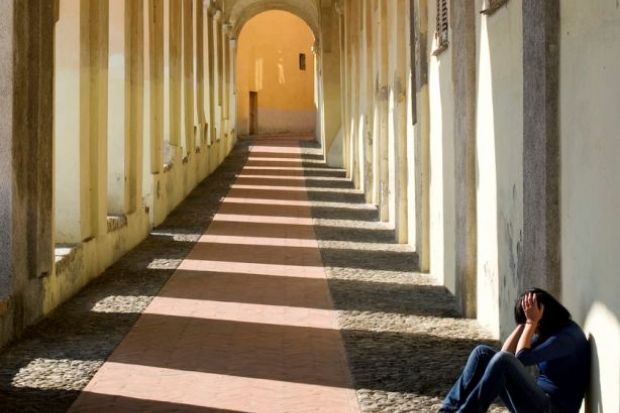Italian scholarship students were waiting nervously to find out if their universities and regions would make up their share of a national funding shortfall, estimated to be about €300 million (£264 million).
Italy’s annual budgets typically pass on a share of scholarship costs to regions and universities, but the amounts involved have skyrocketed this year, according to student leaders, primarily because the value of individual grants have increased without a matched rise in university funding.
The country’s national Union of University Students (UDU) warned that chronic underfunding of higher education, more generous grants, higher demand and squeezed institutional budgets could combine to price thousands of students out of university.
Simone Agutoli, secretary of the University of Pavia’s student union, told Times Higher Education that the scholarship shortfall passed on to his university had ballooned from €100,000 last year to €3 million this year. This widening was partly driven by a roughly 20 per cent rise in the value of individual grants – on average equivalent to an extra €700 per student per year.
As a result of the gaps, Italy’s regional governments have estimated that about 15 per cent of those eligible for scholarships will miss out, equivalent to roughly 20,000 students, according to Mr Agutoli, who also sits on the UDU executive council. By law, regions must chip in at least 40 per cent of what the national government has set aside for scholarships. Politicians in Pavia’s region of Lombardy have chosen to invest about 75 per cent, but that still leaves a gap of approximately €20 million between eligible scholars and available funds, which must now be filled by institutions.
For students and institutions alike, rising costs have made the annual scholarship battle all the more bitter. Niccolo Piras, chair of the Milan Union of University Students, said that the roughly €5,000 granted to needy students from outside the city covers about half the cost of living there. “We’ve seen an increase in the number of people who were asking for the scholarship due to the current economic crisis. Lots of families have seen a reduction in their net wealth,” he said, adding that many more would have been forced out if Lombardy’s government had not gone beyond its legally required share.
The Veneto region has a shortfall of €26 million, according to the local newspaper Il Gazzettino. The region’s councillor for education, Elena Donazzan, told the paper that she and her counterparts in other regions expected central government to act. “We all agreed that there are only two possibilities: either we change the decree or they give us the money,” she said, referring to the law increasing the value of individual grants.
Money available for scholarships varies by region, but the capacity of universities to stump up the rest is even more mixed. Mr Piras said Lombardy’s University of Milan typically makes €35 million profit in a year, some of which it could use for needy scholars, while institutions in Italy’s southern regions tended to post annual losses.
Mr Agutoli said some students were likely to drop out if they could not secure a separate, extraordinary scholarship. UDU’s regional affiliates were hoping that the national budget might still be amended. Failing that, the money could be found from European Union funding, said Lisa Schivalocchi, the union’s international officer. If not, cash-strapped universities would have to cough up. “Everything is possible, but we have lost hope. Technically it’s possible but politically it’s quite difficult,” said Mr Agutoli.
Ms Schivalocchi said more student protests were planned at the Ministry of Universities and Research and the UDU hopes supportive parliamentarians might be persuaded to meet. Campus demonstrations were also set to continue. “We will continue to push inside our universities to have the scholarships covered, but let’s see,” she said.
Register to continue
Why register?
- Registration is free and only takes a moment
- Once registered, you can read 3 articles a month
- Sign up for our newsletter
Subscribe
Or subscribe for unlimited access to:
- Unlimited access to news, views, insights & reviews
- Digital editions
- Digital access to THE’s university and college rankings analysis
Already registered or a current subscriber? Login








